October 28, 2011
Over the past two days, in trying to answer a question on random entries, I tried to design a trading strategy that would use an excessively high number of random entries.
Only two stocks were tested, and I posted elsewhere the results as follows.
First post:
Here is an interesting experiment. I designed a trading strategy that is mainly ready to execute random entries (95%+ level). I have also added a choking factor to limit its libido. Otherwise, it would jump all over the place. The series of charts that follow start with total choking and go to totally free to roam all over. Naturally, the number of trades generated is highly correlated to the degree of choking. Even at its highest degree of freedom, commissions would amount to about $20k. I find it inconsequential as in the trade execution; some $200k has already been charged in commissions.
And when looking at the final results, $20k or $200k would not make that much of a difference, especially when the $200k has already been paid.
 |
 |
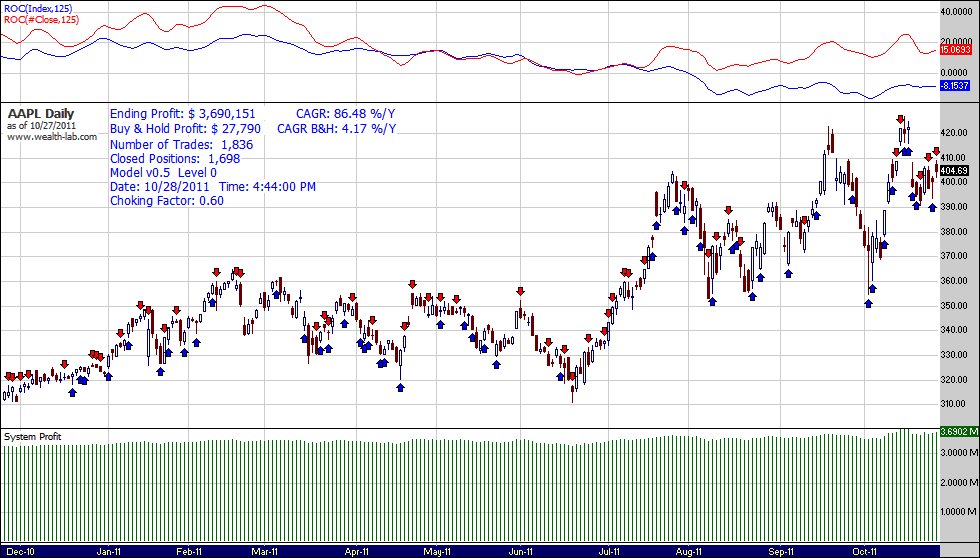 |
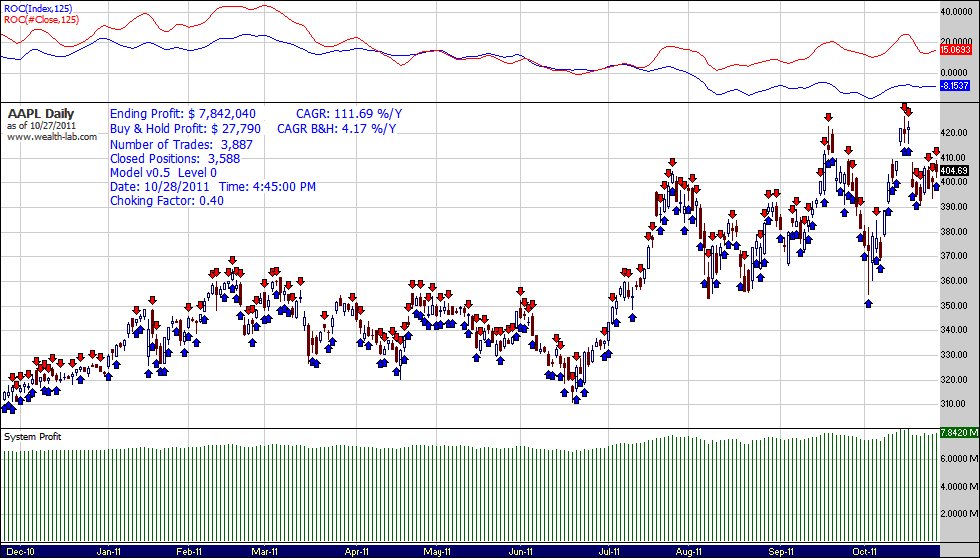 |
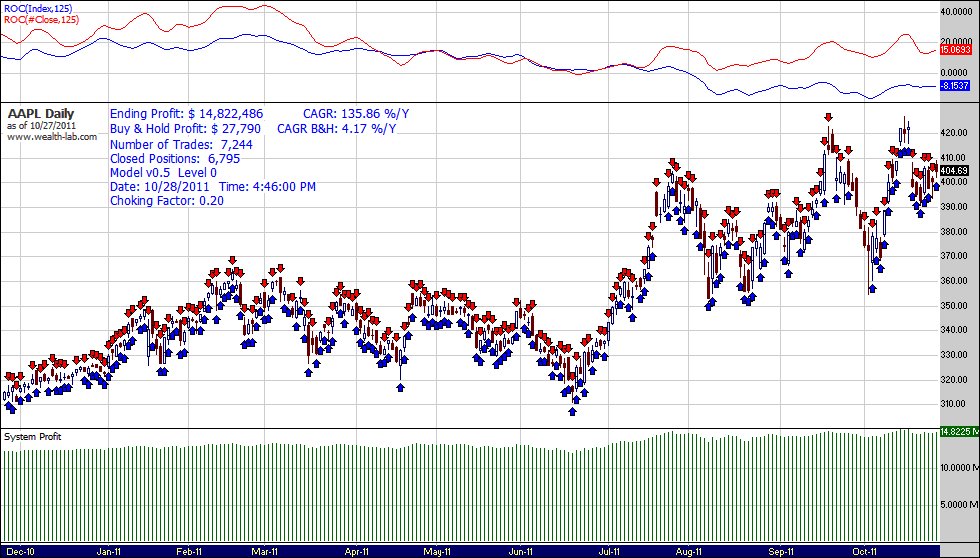 |
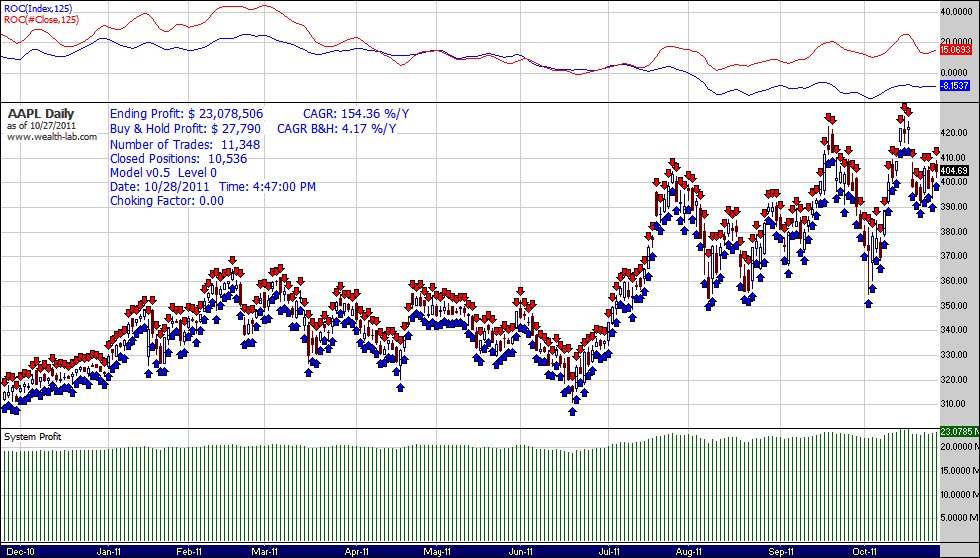 |
( click to enlarge))
The procedures used are very rough, like bulldozing all over; no finesse, no style, but it's not a beauty contest. However, the trading procedures do seem to say: let it all loose.
Second case:
Just in case anyone thought that the previous example could only apply to AAPL and, therefore, was just some kind of aberration of nature. I've simply tried one more stock once and decided that whatever the outcome, that was what would be posted. So, with no further ado, here are the results of the same program as the last example.
 |
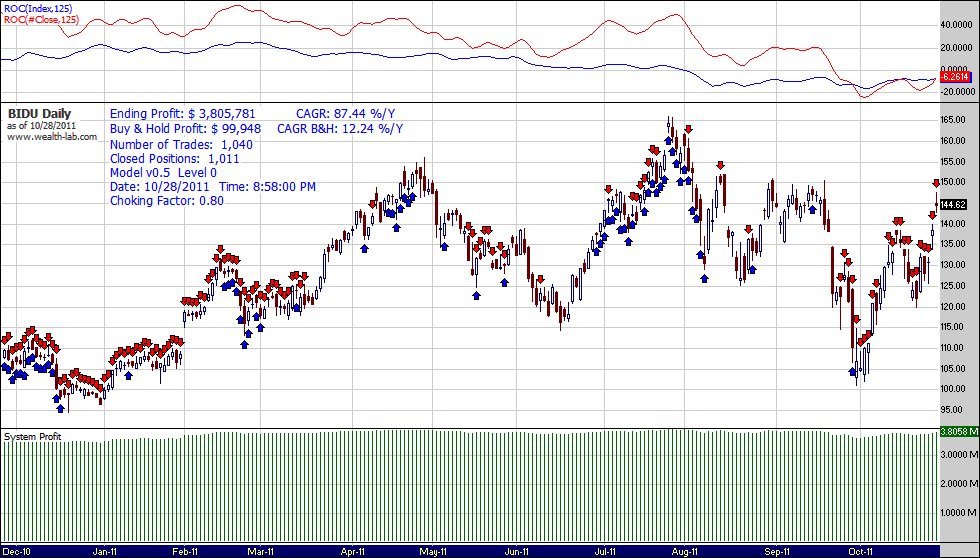 |
 |
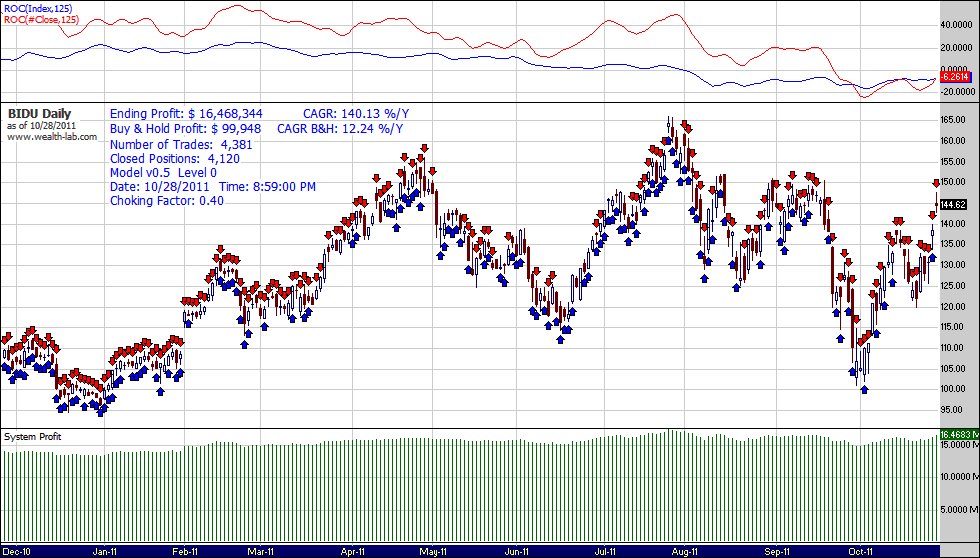 |
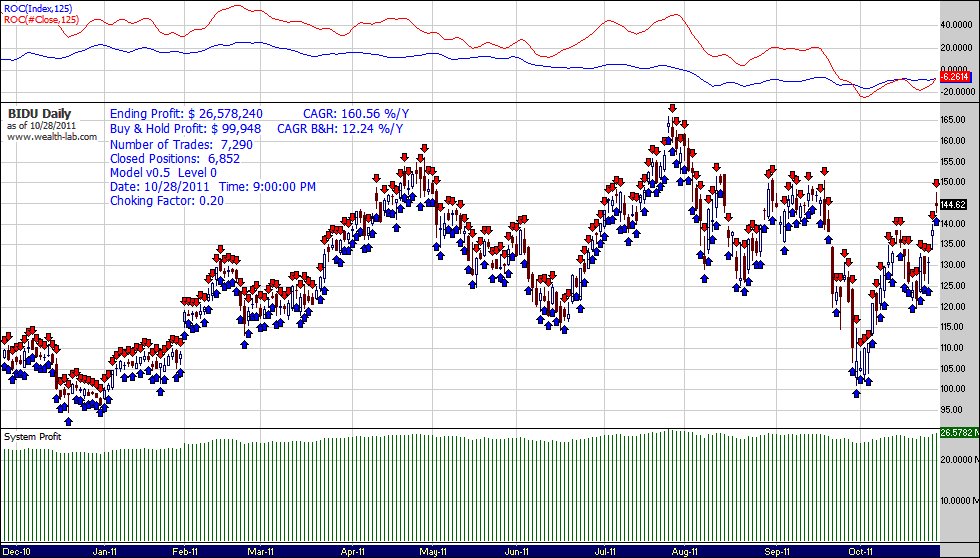 |
 |
( click to enlarge))
What you see, especially in the case where random trades are free from all constraints, is that maybe the exact definition of an entry rule might have an overestimated reputation. Naturally, if your system performs better than the free-to-roam version with no choking of the random process. Well, I must say, welcome to the club.
The use of randomness is just a method available in executing a strategy. They are not opposites since, with the charts provided, you can see that even random entries can benefit your trading strategy.
What you see is a whole bunch of trading procedures competing to be triggered to have a piece of the pie (naturally, as long as there is cash in the account). And there is this controller, this choker, that limits their enthusiasm for getting in the game. The choker can allow all to play or almost none at all. There is this one procedure that is not under its claw, the one that starts the ball. When I take it away, the choker seems to choke, which reduces the number of participants. So that one procedure is allowed to be free of randomness. It might account for about 200 trades over the about 11,000 executed. But nonetheless, an important member of the whole strategy.
The charts say that even with a 95%+ random entry level, on the whim of a random function, can produce, may I say, interesting results. It does make the case for trade automation. Can't do this by hand, too many procedures to follow.
But there is more to this. Modern Portfolio Theory says that in a zero-sum game where even the weak form of the Efficient Market Hypothesis prevails, there is no way to design a trading strategy that will escape by much the efficient market frontier. Well, I must disagree a little on that one and offer the charts to speak for themselves. The charts were produced using the Wealth-Lab 4 simulator that runs on their machines using their data. It's like having an independent strategy tester. So, no chart manipulation, what you see is what came out at the other end (indirect cloud computing).
I did not use statistical analysis, technical analysis, or fundamental analysis in designing this strategy and was able to outperform even all three methods combined. But maybe, I am boldly going where no one has gone before.
Created on ... October 28, 2011, © Guy R. Fleury. All rights reserved.
